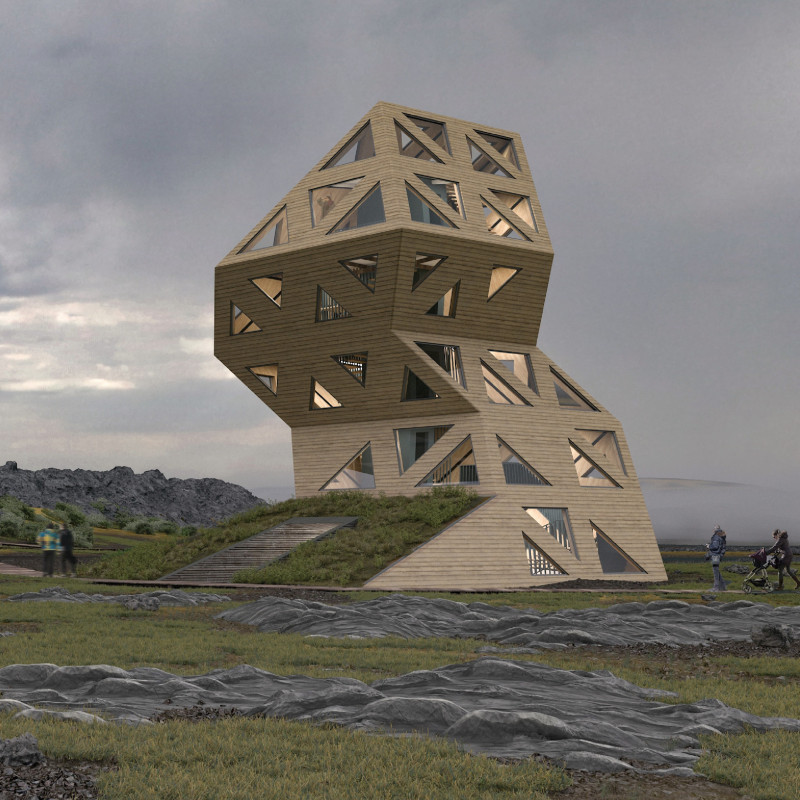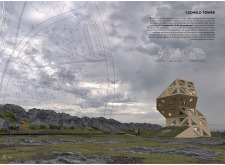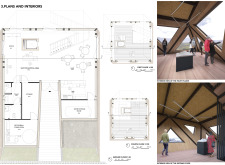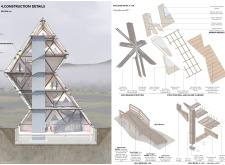5 key facts about this project
The Sowilo Tower is located in Iceland, designed to connect with the unique landscape and cultural history of the area. Drawing its name from the Sowilo rune, which stands for strength and light, it represents these themes throughout its structure. The tower features a distinct spiky shape that resembles the local rock formations, blending naturally into its surroundings. It serves as a venue for exhibitions and offers an observation deck, creating opportunities for visitors to learn about Iceland’s history and to appreciate its natural beauty.
Conceptual Foundation
The concept behind the Sowilo Tower is closely linked to the significance of the Sowilo rune, reflecting ideas of energy and illumination. As visitors move through the tower, they encounter different displays related to the geological features of Iceland, local flora and fauna, and the historical context of the nearby Grjótagjá cave. The arrangement of spaces is intentional, inviting exploration and interaction with the informative content presented across various levels of the tower.
Spatial Organization
The layout of the tower consists of five floors, each serving a particular theme connected to Iceland's environment. The ground floor houses an information center and café, providing a welcoming start for visitors. The first floor highlights the history of Grjótagjá, while the second focuses on its geological aspects. The third and fourth floors delve into the region’s flora and fauna and geological diversity, respectively. The design culminates in a panoramic observation deck on the fifth floor, offering extensive views of the Icelandic scenery.
Sustainability and Materiality
Sustainability plays a significant role in the design of the Sowilo Tower, utilizing passive solar strategies to enhance energy efficiency. The building includes windows that are designed to maximize solar gain during winter months. Additionally, a geothermal energy system draws on nearby hot springs for heating needs. Rainwater recovery systems make use of Iceland’s abundant rainfall. Although not all materials are specified, mentions of neutral materials and wood-based engineered components suggest a focus on environmentally friendly building practices.
Technical Features
The construction approach incorporates pre-fabricated technologies, which helps streamline the process and reduces on-site assembly time. This method also aims to lower environmental impact by optimizing the use of resources. The design prioritizes flexibility, allowing future changes or adaptations. Each element of the tower contributes to its overall connection with the landscape, including its upward-reaching form, which naturally draws the eye to the sky and expands outward toward the stunning surroundings.






















































